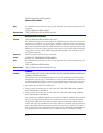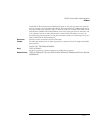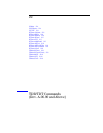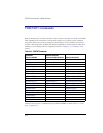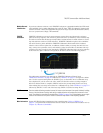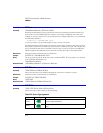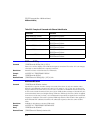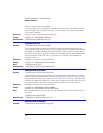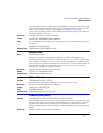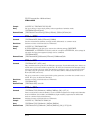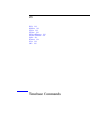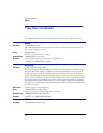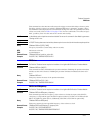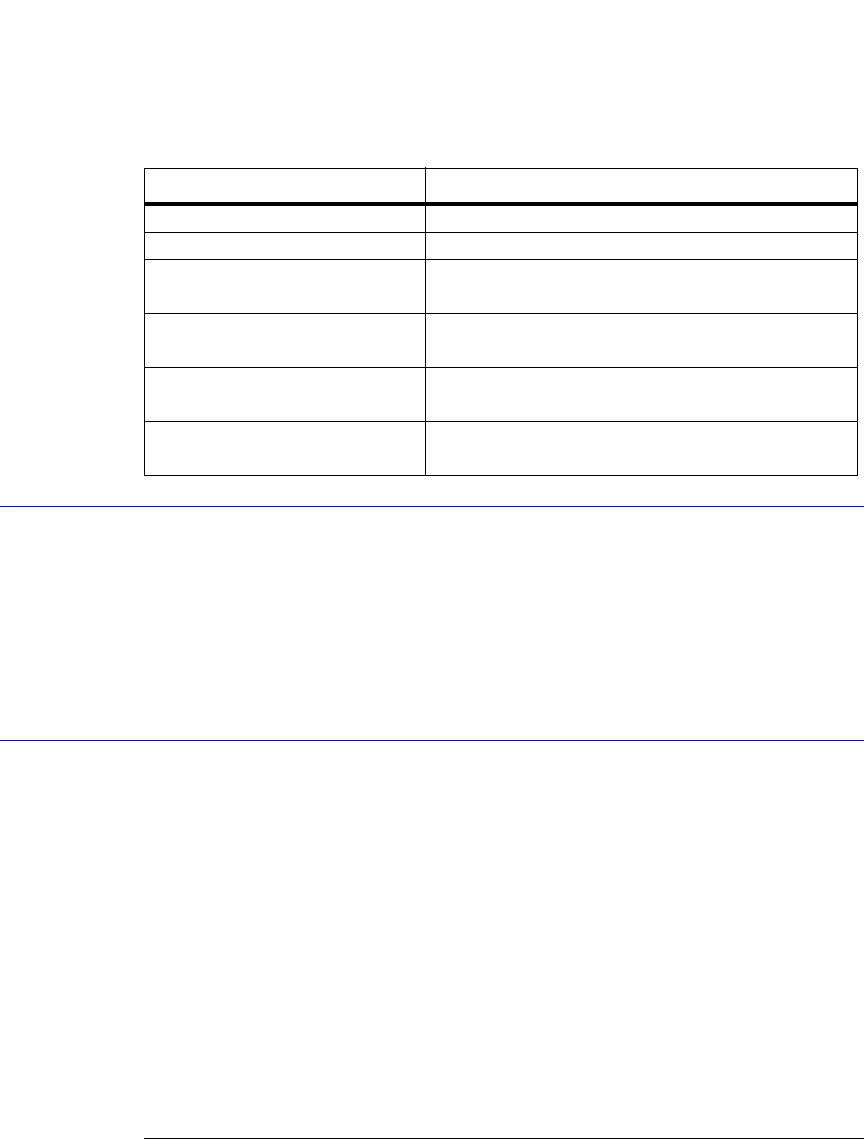
22-6
TDR/TDT Commands (Rev. A.06.00 and Above)
RESPonse:DISPlay
RESPonse:DISPlay
Command :TDR:RESPonse<N>:DISPlay {ON | 1 | OFF | 0 }
Turns on or off the display of the indicated response waveform. The value <N> is an integer,
1 through 4, that identifies the response waveform.
Restrictions Software revision A.06.00 and above. TDR mode.
Example 10 OUTPUT 707;":TDR:RESPONSE1:DISP ON"
Query :TDR:RESPonse<N>:DISPlay?
Returned Format [:TDR:RESPonse<N>:DISPlay] {ON | 1 | OFF | 0 }<NL>
RESPonse:RISetime
Command :TDR:RESPonse<N>:RISetime <risetime>
Specifies the response risetime setting in seconds. Since there is only one risetime value
shared by all calibrated responses, the value of <N> must be 1, 2, 3, or 4. Any of these four
integers will have the same effect. You can select a risetime for TDR/TDT measurements that
is close to the actual risetime used in your system. Valid risetime settings are bounded by the
current timebase and record length settings. While the TDR step’s rise time (which is applied
to the device under test) is fixed, a set of mathematical operations is applied to the measured
response to model the effect of the specified TDR step risetime. This risetime value applies to
both TDR and TDT calibrated channels. All calibrated responses share the same risetime
value.
Restrictions Available in all software revisions. TDR mode.
Example 10 OUTPUT 707;":TDR:RESPONSE1:RISETIME 100 PS"
Query :TDR:RESPonse<N>:RISetime?
Returned Format [:TDR:RESPonse<N>:RISetime] <risetime><NL>
Table 22-3. Examples of Command with Channel Identification
Calibration Command
Single-ended TDR, Channel 1 TDR:RESPonse1:CALibrate
Single-ended TDT, Channel 2 TDR:RESPonse2:CALibrate
Differential TDR, Channel 1 and 2 TDR:RESPonse1:CALibrate or
TDR:RESPonse2:CALibrate
Differential TDR, Channel 3 and 4 TDR:RESPonse3:CALibrate or
TDR:RESPonse4:CALibrate
Differential TDT, Channel 3 and 4 TDR:RESPonse3:CALibrate or
TDR:RESPonse4:CALibrate
Common mode TDR, Channel 1 and 2 TDR:RESPonse1:CALibrate or
TDR:RESPonse2:CALibrate



